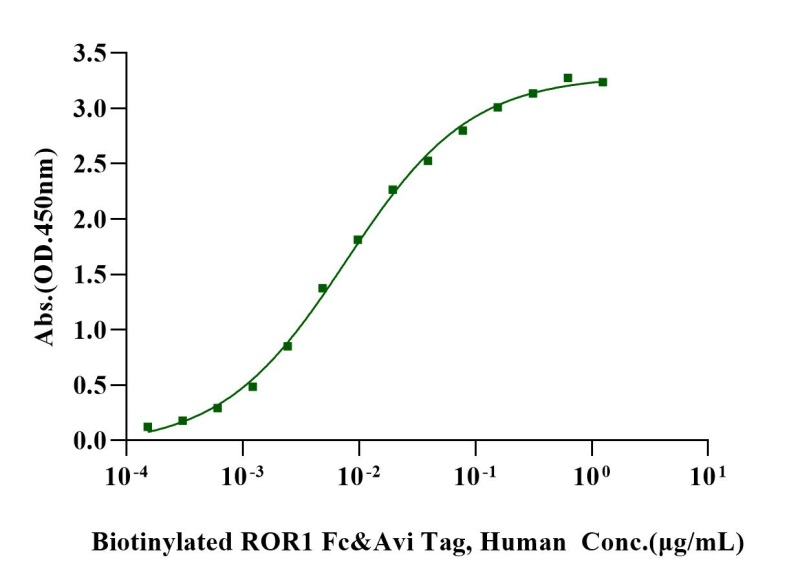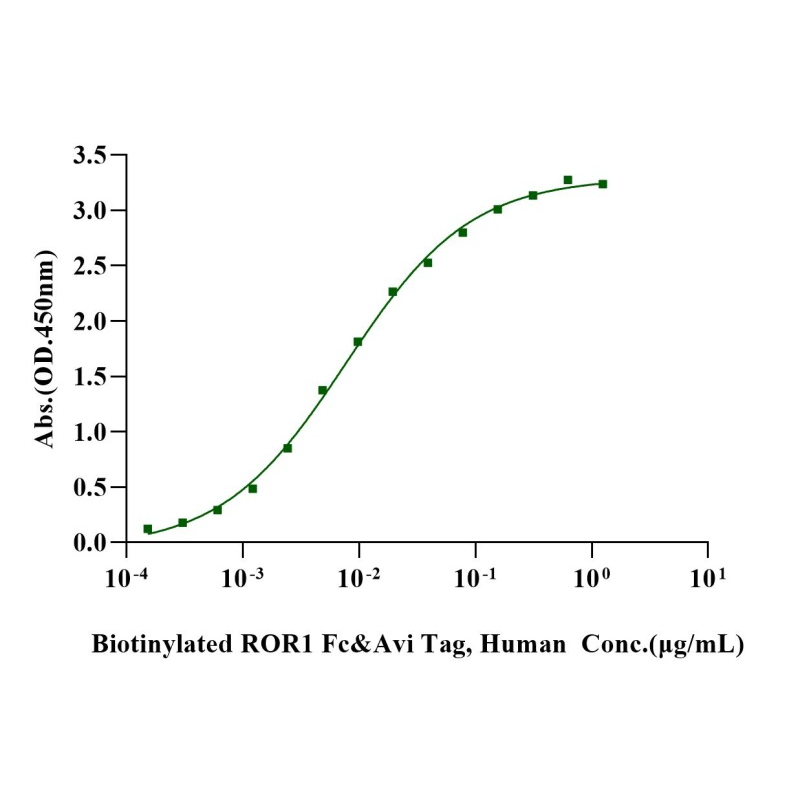1μg (R: reducing condition, N: non-reducing condition).
Product Details
Product Details
Product Specification
| Species | Human |
| Synonyms | Inactive tyrosine-protein kinase transmembrane receptor ROR1, NTRKR1, ROR1, Receptor Tyrosine Kinase Like Orphan Receptor 1, Neurotrophic Tyrosine Kinase, Receptor-Related 1 |
| Accession | Q01973-1 |
| Amino Acid Sequence | Gln30-Glu403, with C-terminal hIgG1 Fc and Avitag |
| Expression System | HEK293 |
| Molecular Weight | 90-95kDa (Reducing) |
| Purity | >95% by SDS-PAGE |
| Endotoxin | <1EU/μg |
| Conjugation | Biotin |
| Tag | Human Fc Tag, Avi Tag |
| Physical Appearance | Lyophilized Powder |
| Storage Buffer | PBS, pH7.4. |
| Reconstitution | Reconstitute at 0.1-1 mg/ml according to the size in ultrapure water after rapid centrifugation. |
| Stability & Storage | · 12 months from date of receipt, lyophilized powder stored at -20 to -80℃. · 3 months, -20 to -80℃ under sterile conditions after reconstitution. · 1 week, 2 to 8℃ under sterile conditions after reconstitution. · Please avoid repeated freeze-thaw cycles. |
| Reference | 1. María Josefina Quezada, Pablo Lopez-Bergami. (2023). The signaling pathways activated by ROR1 in cancer. Cell Signal. 104:110588. |
Background
The receptor tyrosine kinase orphan receptor 1 (ROR1) is a receptor for WNT5A and related Wnt proteins, that play an important role during embryonic development by regulating cell migration, cell polarity, neural patterning, and organogenesis. ROR1 exerts these functions by transducing signals from the Wnt secreted glycoproteins to the intracellular Wnt/PCP and Wnt/Ca++ pathways. Investigations in adult human cells, particularly cancer cells, have demonstrated that besides these two pathways, the WNT5A/ROR1 axis can activate a number of signaling pathways, including the PI3K/AKT, MAPK, NF-κB, STAT3, and Hippo pathways. Moreover, ROR1 is aberrantly expressed in cancer and was associated with tumor progression and poor survival by promoting cell proliferation, survival, invasion, epithelial to mesenchymal transition, and metastasis. Consequently, numerous therapeutic tools to target ROR1 are currently being evaluated in cancer patients.
Picture
Picture
SDS-PAGE
ELISA

Immobilized Anti-Human ROR1 Monoclonal Antibody (Zilovertamab) at 2.0μg/mL (100μL/well) can bind Biotinylated ROR1 Fc&Avi Tag, Human(Cat. No. UA010830)with EC50 of 6.61-8.99ng/mL.


